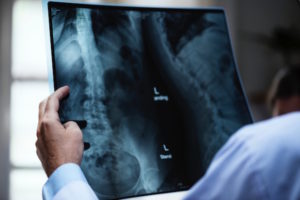Gastroenterologists perform many procedures to give patients answers to their problems. It is heavily recommended to understand the procedure you are in for. Today’s blog informs patients of the ERCP procedure and how it may help.
Introduction:
Endoscopic Retrograde Cholangiopancreatography is a procedure gastroenterologists use to diagnose problems in the liver, pancreas, bile ducts, and gallbladder. This procedure combines an x-ray and an endoscope. An endoscope is a long, flexible, and lighted tube.
A gastroenterologist performs the ERCP by guiding an endoscope through the mouth and throat. Then it goes down the esophagus, stomach, and the first part of the small intestine called the duodenum. Using the endoscope, the doctor can view the organs from the inside to see any problems or red flags.
To highlight the organs, the doctor inserts a tube through the scope. The tube injects a dye which can be seen on X-ray. By doing so, doctors get a thorough examination of the areas with potential issues.
When it is needed:
If you have experienced unexplained abdominal pain, Endoscopic Retrograde Cholangiopancreatography may serve you well. Doctors also perform this procedure for patients with jaundice. This procedure should give your doctor enough information to begin a treatment plan.
This procedure can find blockages or stones in bile ducts. It finds fluid leakage from the bile or pancreatic ducts. ERCP locates blockages of bile of the pancreatic ducts as well.
ERCP finds tumors and bile duct infections which need to be addressed by your doctor. There are many more reasons your doctor could possibly recommend an ERCP to you.
Discuss any reservations you may have with your doctor. This will help you better understand the reasons for performing this procedure. This procedure can help your doctor evaluate symptoms suggestive of disease.
Often, doctors use this procedure to clarify abnormal results from blood tests or imaging tests. Gastroenterologists use ERCP to follow up ultrasounds or CT scans. According to specialists in the field, the most common reasons to do ERCP are as follows: abdominal pain, weight loss, or jaundice (yellowing of the skin). In more serious cases, this procedure is useful after an ultrasound or CT scan that shows stones or a mass in these organs.
Patients that have pancreatic disease benefit from ERCP. The procedure may be used to determine the need for surgery. When surgery is needed, ERCP will assist doctors in determining the best surgical procedure for the patient.
Determine if ERCP is best for you:
If you are pregnant or plan to become pregnant, discuss the amount of radiation used during the test. Radiation is proven to cause birth defects. Inform your doctor of your allergies to dyes (contrast), latex, iodine, or medicines.
In some cases, the endoscope may cause a tear in the esophagus, stomach, or small intestine. The procedure may cause bleeding, infection, or a collection of bile outside the biliary system referred to as biloma.
How to prepare for the procedure:
After discussing risks and allergies, follow the procedure for optimal results. Most doctors advise patients to keep their stomachs empty. Do not eat or drink for eight hours before the procedure time.
Discuss your medications with the doctor. Patients may be advised to skip or adjust certain medicines that conflict with the procedure. If you have heart valve disease, you may need antibiotics.
Depending on the healthcare provider, you will either remain awake or given anesthesia to put you asleep. You should arrange for someone to drive you home afterwards as you will be groggy. Similarly, patients should not work or operate machinery until the following day.
Patients are required to take off any jewelry and clothing. A hospital gown should be provided for the duration of the procedure. You will be given an intravenous line, or an IV, to receive medicine. Occasionally, patients will receive oxygen through the nose.
During the procedure:
If you have properly followed the preparation procedure, you will begin by lying on an x-ray table. Your throat will be sprayed with a local anesthetic to prevent gagging. You may receive medicine through the IV to relax you.
The endoscope will enter down your esophagus, stomach, and into the duodenum. You may feel bloated because of the air used to inflate the duodenum. Contrast material will be injected into the pancreatic or bile ducts.
You may feel minor discomfort. Some patients fall asleep because they are so relaxed. The procedure lasts about an hour on average.
After the procedure:
 Once the procedure has ended, you will be monitored for up to two hours. Sedatives should wear off by then. Your throat and mouth will be sore for a few days.
Once the procedure has ended, you will be monitored for up to two hours. Sedatives should wear off by then. Your throat and mouth will be sore for a few days.
You can resume regular eating habits after the procedure, unless advised otherwise. Usually, the doctor will provide results to you within a day or two. Call your doctor if you have any questions or concerns such as chills, vomiting, fever, pain, or rectal bleeding.
Thank you for reading this week’s blog. Check in next week for additional information. Inquire today with Gastroenterology Consultants of Central Florida for your next appointment.
Staff Writer
